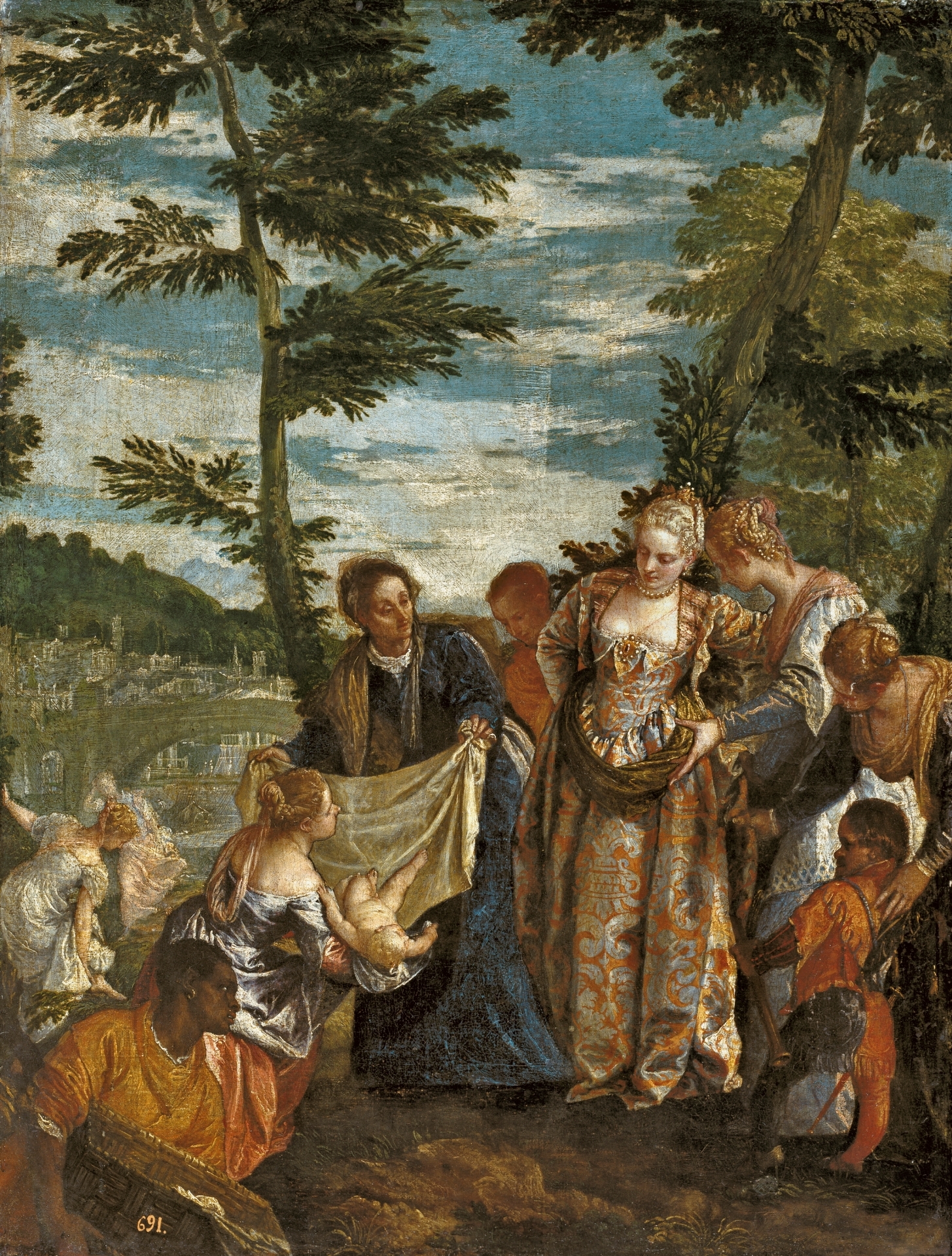+39 0669887260 | info@wucwo.org | Contact us
Art for Meditation - January 2022

©Museo Nacional del Prado ©Archivo Fotográfico Museo Nacional del Prado
Paolo Caliari, known as Paolo Veronese (Verona, Italy 1528 – Venice, Italy 1588), The Finding of Moses, around 1580, oil on canvas, 57 cm x 43 cm, Madrid, Spain, Prado Museum
Month of January.
Women in the Old Testament: Pharaoh’s daughter
There was a man descended from Levi who had taken a woman of Levi as his wife. She conceived and gave birth to a son and, seeing what a fine child he was, she kept him hidden for three months. When she could hide him no longer, she got a papyrus basket for him; coating it with bitumen and pitch, she put the child inside and laid it among the reeds at the River's edge. His sister took up position some distance away to see what would happen to him. Now Pharaoh's daughter went down to bathe in the river, while her maids walked along the riverside. Among the reeds she noticed the basket, and she sent her maid to fetch it. She opened it and saw the child: the baby was crying. Feeling sorry for it, she said, 'This is one of the little Hebrews.' The child's sister then said to Pharaoh's daughter, 'Shall I go and find you a nurse among the Hebrew women to nurse the child for you?' 'Yes,' said Pharaoh's daughter, and the girl went and called the child's own mother. Pharaoh's daughter said to her, 'Take this child away and nurse it for me. I shall pay you myself for doing so.' So the woman took the child away and nursed it. When the child grew up, she brought him to Pharaoh's daughter who treated him like a son; she named him Moses 'because', she said, 'I drew him out of the water.' (Exodus 2:1-10)
Very little of the biblical story remains in this small painting that Veronese probably made for some important personage of the Republic of Venice. The landscape is anything but African, the river is certainly not the Nile, and the clothes of the characters crowding the scene recall the elegance of Venetian fashion. It is, however, probable that the theme of the painting was particularly in vogue in the second half of the sixteenth century (perhaps because the river setting could recall the Venetian lagoon?), if we consider that Veronese painted it at least five times (in addition to the Madrid version, there are versions in Turin, Washington, Lyon and Dresden).
And yet, as we look at the painting, we are certain that we are in front of the scene told by the book of Exodus. All that is needed is a child shown as an offering; a basket in which it was contained and which, in the foreground, is in the firm hands of a black woman; and the elegantly dressed woman at the centre of a small group formed by other women, whom we recognise as Pharaoh’s daughter. She is the one who is looking at the little Hebrew drawn out of the waters of the Nile, the one who will call him Moses, which precisely means “saved from the waters.”
As we contemplate the scene depicted by our painter, we are struck both by the beauty and richness of the landscape (especially the two trees in the background that span the entire painting’s height) and by the semi-circular arrangement of the characters, which begins with the maid holding the basket on the left and, through the various servants and Pharaoh's Daughter, ends with the jester, whose presence reveals the high social status of those present.
Anyhow, our attention cannot fail to be captured by the beautiful dress and jewellery worn by the woman who is the protagonist of the scene. Even the light seems to participate in the painter’s desire to highlight the most important character. All the more so because it will be thanks to her that her father’s order - to kill all the firstborn male children of the Hebrews - is disregarded, and the little Moses finds life in the very family that should have wanted him dead. I don't think it is a coincidence that both the biblical story and Veronese’s painting show us almost exclusively women. It is the woman, the mother, who is capable of bringing life and manages to impose it even where death has already been decided. And so, Moses, destined to certain death by the edict of Pharaoh, is not only saved from the waters, but he even becomes part of the family of Pharaoh himself, having been adopted by his daughter!
The living God, the God of Abraham, Isaac and Jacob, our God leads history in ways that are often incomprehensible to us.
To him we entrust our lives so that through us and our poverty in the world, love may grow and salvation be given.
(Contribution by Vito Pongolini)